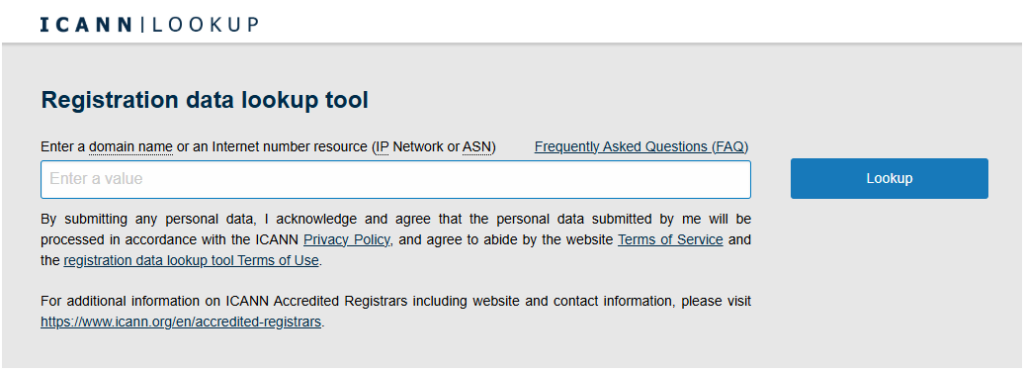YOUR AD HERE

WEST PALM BEACH, FL – In a significant shift for the internet’s infrastructure, the decades-old Whois system is being phased out, making way for its modern successor: the Registration Data Access Protocol (RDAP). This transition marks the end of an era for one of the internet’s most recognizable tools and ushers in a new chapter in how domain registration data is accessed and managed.
For years, Whois has been the go-to resource for querying domain name registration information. Whether used by cybersecurity professionals, law enforcement, or curious internet users, Whois provided a simple way to look up details about domain ownership, registration dates, and contact information. However, as the internet evolved, Whois began to show its age. Criticized for its lack of standardization, inconsistent data formatting, and vulnerability to abuse, the system struggled to meet the demands of a more privacy-conscious and regulated digital world.
Enter RDAP, a modern protocol designed to address Whois’s shortcomings. Developed by the Internet Engineering Task Force (IETF) and adopted by the Internet Corporation for Assigned Names and Numbers (ICANN), RDAP offers a more structured, secure, and flexible way to access domain registration data. Unlike Whois, which relies on plain text responses, RDAP delivers data in a standardized JSON format, making it easier to parse and integrate with other systems. It also supports internationalization, enabling the display of non-ASCII characters, and includes built-in access control mechanisms to protect sensitive information.
Registration Data Access Protocol is now the primary source for gTLD registration info, replacing WHOIS! 🌐
InterNetX provides an ICANN-compliant RDAP service. While WHOIS services remain operational for now, we encourage customers to transition to RDAP to stay future-proof. 🚀 pic.twitter.com/bEysjJnxpr
The transition to RDAP has been gradual but is now gaining momentum. ICANN has been encouraging domain registrars and registries to adopt the new protocol, and many have already made the switch. The official RDAP lookup tool, available at https://lookup.icann.org/en/lookup, provides a user-friendly interface for querying domain data using the new system. While Whois will remain available for some time, its eventual retirement is inevitable as RDAP becomes the global standard.
This shift is not just a technical upgrade; it reflects broader changes in how the internet is governed and used. With the implementation of privacy regulations like the European Union’s General Data Protection Regulation (GDPR), the days of freely accessible domain ownership details are largely over. RDAP is designed to comply with these regulations, offering a more privacy-respecting approach to data access. For example, it allows registrars to redact personal information from public queries while still providing a mechanism for authorized parties to access the full data when necessary.
This transition is not without its challenges. Some users accustomed to the simplicity of Whois may find RDAP’s structured format and additional features initially daunting. Additionally, the phased rollout means that not all domain registries have fully adopted the new system, leading to inconsistencies in data availability.
As the internet continues to evolve, the retirement of Whois and the rise of RDAP symbolize a broader shift toward a more secure, standardized, and privacy-conscious digital ecosystem. While Whois will be remembered as a foundational tool of the early internet, RDAP is poised to become the backbone of domain data access for years to come.
For those looking to explore the new system, ICANN’s RDAP lookup tool is now live at https://lookup.icann.org/en/lookup, offering a glimpse into the future of domain registration data.

Filed Under: Domain Names Tagged With: (Icann), (Ietf), Abuse, Access, Accessed, Accessible, Address, Adopt, Adopted, Age, Allows, ASCII, Assigned, Authorized, Availability, Available, Backbone, Characters, Comply, Contact, Control, Corporation, Cybersecurity, Data, Data., Dates, Decades, Delivers, Demand, Designed, Developed, Digital, Display, Domain, Ecosystem, Enabling, Encouraging, End, Enforcement, Engineering, Era, European Union, Evolved, Flexible, Force, Format, Formatting, Gaining, gdpr, General, Global, Gradual, ICANN, Implementation, Inconsistent, Inevitable, Information, Infrastructure, Integrate, Interface, Internationalization, Internet, Json, Law, Lookup, Managed, Mechanism, Mechanisms, Modern, Momentum, Name, Names, Numbers, Offers, Official, On, Ownership, Parse, Personal Information, Plain, Privacy, Professionals, Protect, Protection, Protocol, Public, Queries, Querying, RDAP, Redact, Registrars, Registration, Registries, Regulated, Regulation, Regulations, Relies, Resource, Responses, Retirement, Secure, Sensitive, Shortcomings, Standard, Standardization, Standardized, Structured, Successor, Switch, System, Systems, Task, Technical, Text, Tool, Tools, Unlike, Upgrade, Used, User-Friendly, Users, Vulnerability, which, Whois
 17 hours ago
1
17 hours ago
1







 English (US) ·
English (US) ·